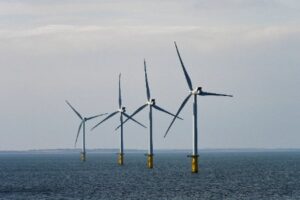Pros and Cons of Nuclear Energy

Nuclear energy or atomic energy is considered a very important source of energy for humanity because releases a very low amount of carbon emissions and has a huge potential to generate unlimited amounts of clean power.
What is Nuclear Energy?
All matter in the known universe is made of tiny units called atoms, and most of the mass of each atom is concentrated in its nucleus (the center of the atom).
The rest of the mass is concentrated in the electrons surrounding the nucleus.
Protons and neutrons represent subatomic particles that can be found in the nucleus of the atom.
In certain conditions (nuclear fission reaction), the nucleus of a large atom can be split in two and this way a certain amount of the mass of the atom is converted into pure energy after Einstein’s famous formula E=mc2 (where m is the mass of the atom converted into pure energy and c is the speed of light).
Nuclear Energy (Atomic energy) in the World Today
Today, a number of 30 countries operate 449 nuclear reactors to generate electricity, and a number of 60 new nuclear power plants are under construction in 15 countries.
The U.S. is the world’s main producer of electricity from nuclear energy (805 billion kWh) and is followed by France (384 billion kWh) and China (210 billion kWh).
What is the Difference Between Nuclear Fission and Nuclear Fusion?
The Nuclear Fission Reaction
is the first discovered between the two and all the commercial nuclear power plants in operation today are using this type of nuclear reaction to generate electricity and a certain amount of nuclear waste.
During the nuclear fission reaction a large atom such as Uranium or Plutonium is hit by a neutron to split the atom into two smaller atoms, which are called fission products.
Several other neutrons are released to split other nearby atoms that will produce a nuclear chain reaction which will release a sustained energy flow.
The Nuclear Fusion Reaction
The nuclear fusion reaction is the reaction that occurs every second in the sun, and generally uses hydrogen as fuel and produces helium as waste.
In the nuclear fusion reaction two small atoms (Hydrogen) are combined to produce heavier atoms (Helium) and energy.
More energy is released in the nuclear fusion reaction compared to the nuclear fission reaction, and a much smaller amount of nuclear waste, which makes it more suited for our energy needs.
However, humanity needs two or three more decades to master the nuclear fusion reaction, so by then we are bound to use nuclear fission and a combination of fossil fuels and renewable energy to cover the energy demand of the planet.
Pros of Nuclear Energy
Until we have to use only the nuclear fission reaction to generate electricity, we can say that nuclear energy or atomic energy is seen as an energy source that produces dangerous nuclear waste and from time to time nuclear disasters and radioactive incidents.
In the future, when technology will allow us to use the nuclear fusion reaction, many of these inconveniences of the nuclear power will be reduced.
1. Relatively Low Operating Costs
If the initial costs of building the nuclear power plant are quite high, the power plant will generate later only costs with the enrichment and processing of the nuclear fuel (Uranium), disposing nuclear waste and the maintenance services.
Generating electricity in nuclear power plants is cheap, is even cheaper than producing electricity from coal, oil, gas or renewable energy sources.
2. A Low Polluting Energy Source
The production of electricity in the nuclear reactors is not releasing harmful emissions, but produces dangerous nuclear waste.
However, nuclear energy was considered a great source of cleaner energy that can successfully replace fossil fuels such as coal, oil and natural gas in the battle against global warming and climate change.
3. A Reliable Energy Source
Modern nuclear power plants represent a reliable energy source because they can produce electricity with minimal costs.
Nuclear power plants can also work together with renewable energy sources such as solar and wind power, and when the renewables are available (due to the weather conditions) the nuclear power plant can lower its electricity production, and when the renewables are low in production the nuclear power plant will increase its output of electricity.
4. High Energy Density
The energy density of the nuclear energy cannot be compared with any other known source of energy (fossil or renewable).
If coal has an energy density of 32.5 MJ/kg (Megajoules/kilogram) and crude oil 41.9 MJ/kg, natural uranium (LWR) has an energy density of 5,700,000 MJ/kg, thorium (breeder) has a density of 790,000,000 MJ/kg, and natural uranium (breeder) has a density of 810,000,000 MJ/kg.
All these translate into the fact that if we are trying to power a 100W light bulb with the energy produced by 1 kg of coal, the bulb will work almost 4 days, but if we are powering the same 100W light bulb with the energy produced by 1 kg of natural uranium, the light bulb will work for 25,700 years.
5. Thorium is Considered a Cleaner Nuclear Fuel
Thorium is considered today a cleaner nuclear fuel than uranium.
With the today’s consumption of nuclear fuel in the nuclear power plants we have enough uranium for another 80 years.
However, thorium is a radioactive chemical element that can successfully replace uranium in the nuclear reactors.
Thorium is more abundant on planet Earth than uranium, has superior physical and nuclear fuel properties, and produces less nuclear waste.
Many countries in the world are already planning to use thorium as an alternative nuclear fuel to uranium because thorium provides a new and sustainable supply of fuel for nuclear power plants, and generates a reduced amount of nuclear waste.
6. Nuclear Energy is a Renewable Energy Source?
We already know that nuclear energy is not a renewable energy source because the supply of nuclear fuel is limited.
Nuclear energy is not a clean energy source, it is considered only a cleaner energy source than coal, oil and natural gas because produces electricity with almost no carbon emissions but generates dangerous nuclear waste.
If humanity will manage to master the nuclear fusion reaction, which can provide unlimited amounts of clean power, only then we can declare nuclear power as a renewable energy source (hydrogen is the most abundant element in the universe).
Cons of Nuclear Energy
There are several disadvantages produced when using nuclear energy as power source.
1. Dangerous Radioactive Waste
The nuclear fission reaction is able to produce cheap electricity, but also dangerous radioactive waste that is hard and expensive to dispose.
On average, a nuclear power plant generates during a year of activity about 20 metric tons of used nuclear fuel (nuclear waste), while the entire nuclear industry generates during the year between 2,000 and 2,300 tons of nuclear waste.
Such a large amount of dangerous nuclear waste is not entirely disposed right away, a part of it is recycled and turned into high-level radioactive waste (from used nuclear fuel), which in its final form will be disposed in a permanent facility.
2. The Impact on the Environment
Beside the fact that the nuclear waste is disposed here on the planet and requires tens and even hundreds of thousands of years to become inoffensive for the environment (uranium and plutonium), the mining process, refining and transporting uranium is also a dangerous process which involves high risks for the environment.
3. Nuclear Disasters and Radioactive Incidents
Humanity has built the first nuclear power plant that has used the nuclear fission reaction to produce electricity in 1951. The name of the nuclear reactor was EBR-I (Experimental Breeder Reactor I) and was designed to have an electrical output of 200 kW.
Since 1951, many countries have started to build nuclear reactors to generate electricity (and weapons of mass destruction), and the nuclear disasters and radioactive incidents did not delay to appear.
The Chernobyl nuclear disaster (April 26, 1986), is considered the worst nuclear disaster so far, and is followed by the Fukushima Daiichi nuclear disaster that took place on March 11, 2011 (both were level 7 events).
These major nuclear accidents have affected the health of many people as also the environment.
4. High Costs with the Nuclear Waste Disposal
Disposing nuclear waste is a pretty expensive activity that involves the construction of huge and very secured structures (where the nuclear waste can be deposited permanently).
The places where the nuclear waste is disposed must be guarded strictly and away from people that are trying to steal the radioactive materials.
5. Is An Attractive Target for Terrorists
Due to the fact that the nuclear waste is still radioactive, it can be used by terrorists to build weapons of mass destruction, so all the structures that are hosting dangerous nuclear waste that must be kept away from the surrounding environment must be guarded strictly and away from any criminal mind.
6. Uranium is a Finite Source of Energy
Uranium and plutonium are the first nuclear fuels used by humanity in the nuclear fission reactors built to generate electricity or weapons of mass destruction.

Pickering Nuclear Generating Station.
Conclusion
Uranium and plutonium are finite sources of energy (non-renewable) and with the current level of consumption in the nuclear power plants, uranium is enough for about 80 years.
Luckily, scientists in many countries are working to develop nuclear reactors that could use thorium as nuclear fuel, which is a better nuclear fuel than uranium because is pretty abundant in nature and generates less nuclear waste.
In about three decades from now on, it is very possible that humanity will master the nuclear fusion reaction, so the way towards unlimited clean energy is not so far.







